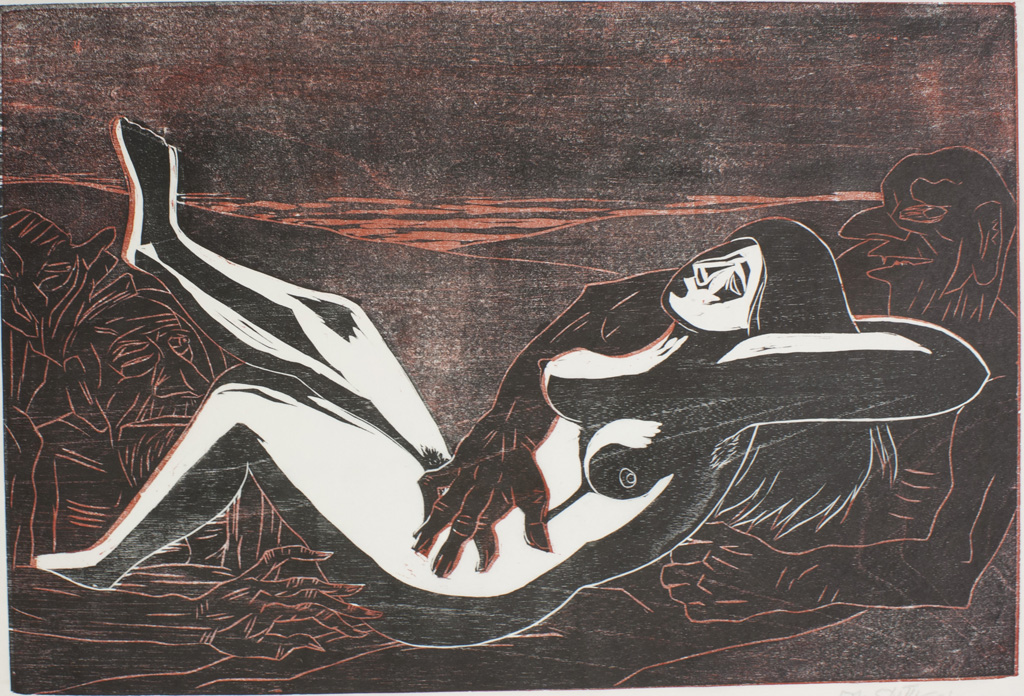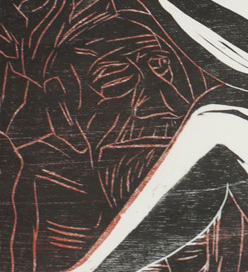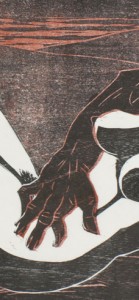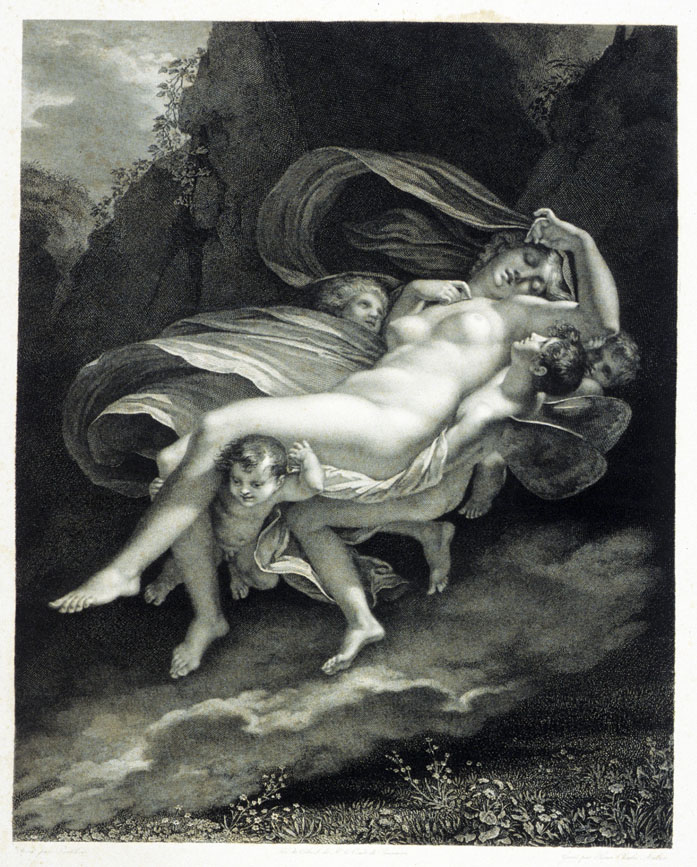This post appears in conjunction with the exhibit Conversations: Selected Works from the Jacqueline Koldin Levine ‘46 and Howard Levine Collection (Class of 1912 Rare Book Room, Canaday Library, September 10 – October 14, 2012).
This blog was written by Maeve Doyle, graduate student in History of Art and co-curator of the Conversations exhibit.
An art historian is in many ways a detective. Works of art are rarely explicit about their origins or the intentions of their makers; it’s up to the art historian to reconstruct an object’s historical context. I’m sure I’m not alone in sometimes imagining my research as a criminal investigation when I’m hot on the heels of an elusive document or picture. But one doesn’t need the comparison to a Sherlock Holmes adventure to heighten the sense of triumph at the moment of discovery.
In planning Conversations, the exhibition showcasing the Jacqueline Koldin Levine ’46 and Howard Levine Collection, we in Special Collections had a lot of detective work ahead of us in order to find out more about these newly acquired works. One of the most striking works in the collection – by Costa Rican artist Francisco Amighetti – offered me a juicy clue as to how to understand it. The image shows a naked woman restrained within the clutches of three grotesque, lecherous figures, and the pencil inscription beneath the wood engraving print titles the work “Susana”.
 Francisco Amighetti, Susana
Francisco Amighetti, Susana
Wood engraving, 1986
Bryn Mawr College Special Collections 2012.27.441
The image alone presents a nightmarish scene, its reality stripped to the colors of black, white, and red, the space reduced to a spare landscape at the last moments of sunset, and its figures overrun by the driving forces of sexual desire and fear. The inscription of the name “Susana” adds another layer to this dark fantasy by connecting it to a narrative – that is, the biblical story of Susanna and the Elders.
The story of Susanna is told in Chapter 13 of the Book of Daniel, a chapter now considered apocryphal (one reason why Susanna is less familiar to readers today). Because Daniel 13 isn’t in any modern bible, I looked to an older edition – from the 17th century – to reacquaint myself with Susanna’s story. As I did, I was surprised to find something closer to a modern cop or courtroom drama than the salacious violence of Amighetti’s print. The dramatic moment of the biblical story is not the city elders’ attempt to rape pious Susanna, but her subsequent trial, at which she calls on God to defend her from their false accusations of adultery. God inspires a man in the crowd, Daniel, to come to Susanna’s defense. In a classic cop-show twist, Daniel questions the elders separately and traps them in a lie, exposing their guilt and Susanna’s blamelessness. The people of Babylon stone the elders to death and everyone else lives happily ever after.
Amighetti, however, shifts the focus in the story to the moment of the elders’ threat against Susanna. The two surprise her while she is bathing alone in her husband’s garden and threaten her with a choice: either submit to their sexual demands, or face death under a false accusation of adultery. Passages from Amighetti’s print illustrate the assault on Susanna’s safety and privacy vividly: the single, bulging eye of the attacker on the lower left, or the contrast of the attacker’s black-red hand against Susanna’s white skin.
Francisco Amighetti, Susana, details
Wood engraving, 1986
Bryn Mawr College Special Collections 2012.27.441
Amighetti is not alone in this decision; in fact, it is the moment of Susanna’s confrontation with the elders – not her trial or their punishment – that is most often depicted in artistic representations of the story. In fact, the popularity of Susanna in the 16th and 17th centuries appears to have less to do with the moral dimensions of her story, and more to do with the opportunity to showcase the nude female form in painting. Indeed, the Susannas of Tintoretto and Peter Paul Rubens show little resistance to the elders’ invasion of the orchard: almost uniformly, these artists transform a scene of attempted violation into a representation of female sexual availability. (The striking exceptions are the Susannas of Artemisia Gentileschi, one of the rare female artists of the 17th century.)
While Renaissance artists transformed the biblical Susanna into an object for male voyeurism, Amighetti takes his representation one step further. He looks to representations from classical mythology of the rape of mortal women, often by supernatural men: Zeus carried Europa and Io away to serve his pleasure; Paris eloped with Helen with little thought to the consequences for Troy; Eros awakened the young Psyche to the world of sensual love and marriage. In art from the 16th through the 19th centuries, these scenes of kidnapping and rape were almost always refigured as an erotic experience for the always-willing woman. A print in Bryn Mawr’s collection, made after a painting by Pierre-Paul Prud’hon, is a classic example of the genre, and it is easy to compare the poses of Amighetti’s Susanna and Prud’hon’s Psyche as she is carried away by the god of love’s cherubic accomplices.
Henri Charles Müller, The Rape of Psyche
Engraving, after a painting by Pierre-Paul Prud’hon, 1st half of the 19th century
Bryn Mawr College Special Collections VP.279
In Amighetti’s print, however, the angelic assembly is replaced by a host of grotesque, lecherous attackers. And despite the similarities in Psyche’s and Susanna’s postures, Susanna’s response is ambiguous. With her eyes half closed and her arms pinned behind her back, it is unclear whether she is overcome by ecstasy or terror – and whether Amighetti is participating in the same visual traditions that characterize representations of Susanna, or if he is reacting against them. I still have a lot of questions about Susana – but this is where art history differs from detective work. Where Sherlock Holmes prides himself on having an answer to any question still remaining at the end of a tale, I always hope that the answers I find will raise even more questions.



